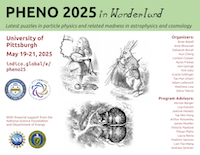Speaker
Description
The Lyman-alpha forest enables the study of cosmic structure on scales much smaller than those probed by baryon acoustic oscillations (BAO). While the BAO feature appears at 150 Mpc, the Lyman-alpha forest can resolve structure down to 1 Mpc, limited primarily by spectrograph resolution. This sensitivity makes it a powerful probe of small-scale clustering, which is influenced by the mass of neutrinos and hypothetical dark matter particles. However, this advantage comes with the requirement of a careful study of instrumental systematics. We quantify the small-scale clustering using the one-dimensional flux power spectrum (P1D). In this talk, I will present our P1D measurements from DESI Data Release 1 and outline our strategy for mitigating systematics related to CCD defects. By the time of the symposium, I expect to have preliminary cosmological insights from this analysis.

